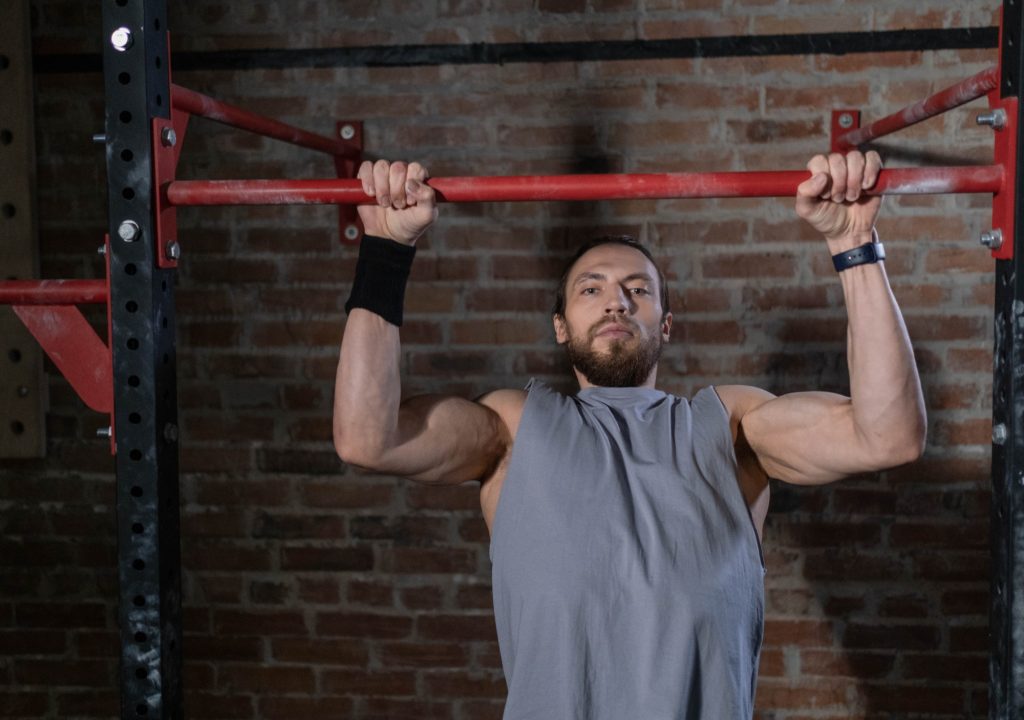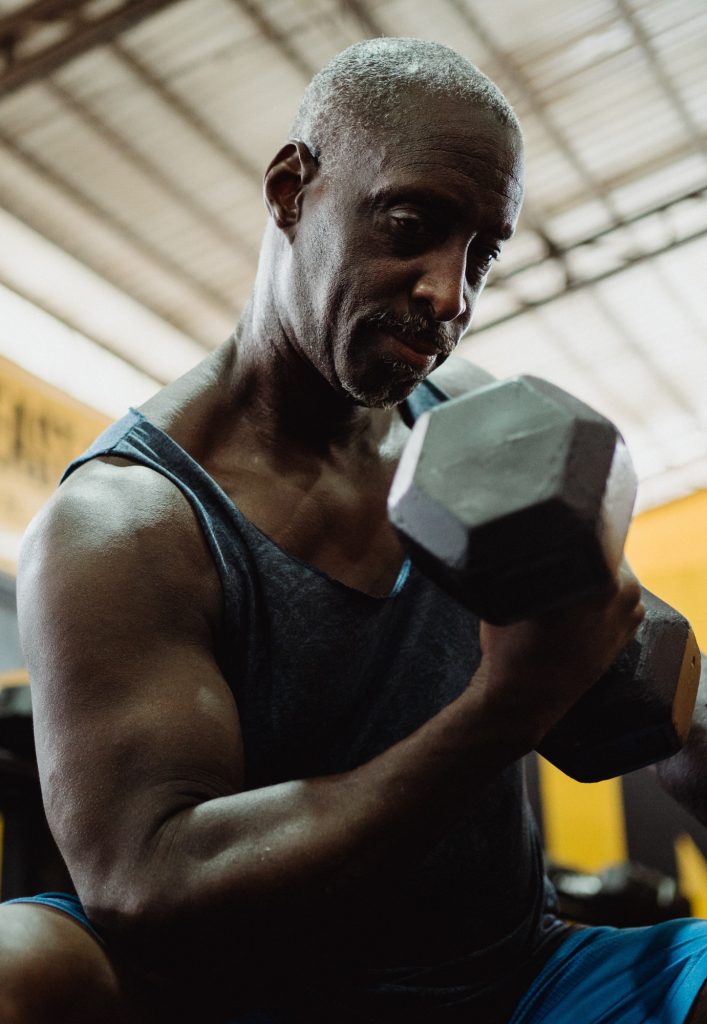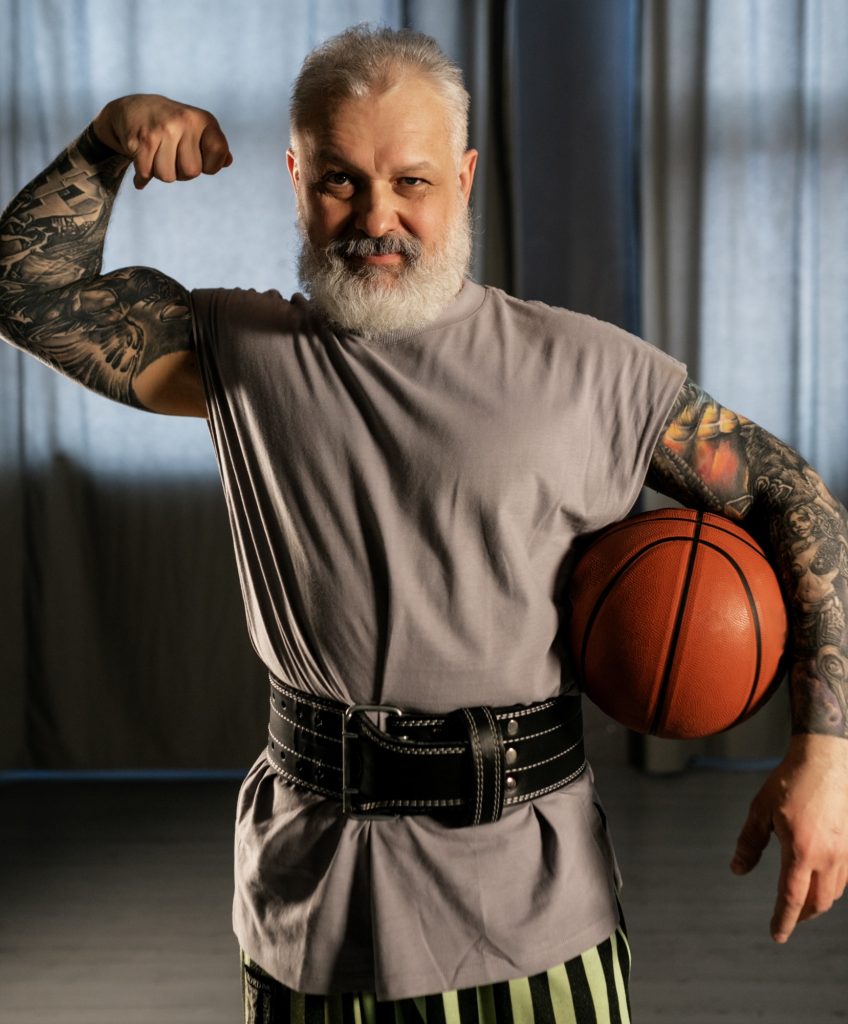Bodybuilding and fitness content on the internet focuses on maximalist or “more is better” training for maximum gains. But the reality is that most people find the idea of getting an effective workout in a much shorter time frame very appealing.
People are busy, and most don’t have the time to dedicate one to two hours to the gym daily.
The question of what’s the least amount of time we can spend in the gym and still make measurable solid progress is vital for every recreational sports practitioner.

Busy parents should prioritize time efficiency more than the best results in the gym. How can we make visible gains and progress with the least amount of work and committed time? The second question is what results can we actually expect with this approach and within what time frame?
Let’s move on with this and see what we can find as scientific facts about this topic. And what can I contribute with my own experience as a 45 years old dad, with a constantly full schedule but solid gym experience?
First, I want to disillusion everyone that you can get jacked in a few months with a minimalist approach, a healthy lifestyle, and good natural whole food. That’s not happening. But you can get healthier, build strength and visible muscles, drastically reduce fat, and be more satisfied within a year or two.
This is highly achievable for everyone who is relatively healthy by dedicating, in total, 3-4 hours per week.
The great side of this is that it is cumulative and that, over time, you will feel and look better without the need to spend more time at the gym. Just to be consistent.
Suppose you check what Internet gym gurus recommend. In that case, that is hardcore 1.5-2 hours of gym sessions at least 3-5 times per week; aerobic exercises; eating patterns that would be almost impossible to consume, prepare, and very hard to afford. Not to mention the price and questionable safety and usefulness of all the supplements they recommend.
I realized long ago that such an approach, at least in my case, is a pipe dream. I needed to find a way that would take me the least possible amount of time required for exercises, fit into my busy schedule, and low-carb – intermittent fasting lifestyle.
I was thinking: Ok, I can’t match 100% of those gym enthusiasts who live in the gym, but I probably can get 80% of their results by spending 5 times less time.

Aside now with the mainstream YouTube, Tik-Tok, and Instagram gurus.
Let’s see what science and my personal experience have to say.
Best practice: resistance exercises
10 – 25 sets per major muscle group/part per WEEK
5 – 25 reps per set
Goal: to hit each muscle group 1+ times per week
Style: split or whole body
Resistance: Maximum effort
Required time: 45 – 75 min per session
Resting time – 1/3 of the time is exercise, 2/3 is resting time
Feeding: to take 200-500 more calories than your basic maintenance requirements. Preferably high-quality food with 1-2 gr of protein per 1 kg of body weight.
Science is vague here if you ask me, but that is understandable due to the number of studies and individual reactions to exercises. To make this easy and understandable, here is a sweet spot based on my own experience and research.
Best practice: resistance exercises + long walks
8 – 12 sets per major muscle group/part per WEEK
5 – 12 reps per set
Goal: to hit each muscle group 2 – 3 times per week
Style: whole body
Resistance: Maximum effort (close to failure)
Required time: 60 – 75 min per session (including warm-up and stretching)
Resting time: 30 – 90 seconds
Feeding: 200-500 more calories than your basic maintenance requirements. Total protein intake: ~ 150 gr/day. Body weight 85 Kg. No protein shakes. Just a regular good low-carb whole-food.
With this, and steady resistance progression, I still manage to increase my strength, muscle mass, and stamina.
To be more tangible and precise, I will explain what it means when I say “strength progression.” By this, I mean that I can increase the resistance (the weight I lift) by some 2-3% or make 2-3 more reps with the same weight each month.

My qualification for good reps and junk reps:
Simple and straightforward: If I can do more than 12-14 reps, I consider it junk volume as I am losing time and haven’t noticed specific gains by doing that.
Less than 3 reps per set I consider junk set as I can’t see any particular progress I am making with that, except personal satisfaction. Another downside of doing 1-3 reps is a high risk of injuring myself as I can’t maintain proper posture while exercising.
Do your workouts wisely- do not spend more time in the gym than necessary or by harming yourself.
Younger people may consider this too conservative, but as you age, the main thing is to keep your progress constant. You can’t do that if you suffer from injuries.
If you wish to be more methodical, you can follow top athletes on Open Power Lifting (www.openpowerlifting.org). Track the progress of your favorite athletes (in %) and see how you compare with that (your own progress in %).
Of course, this cannot go indefinitely, but I am still pushing my plateau.
Once you reach your plateau, you can change the exercise you do to challenge your muscles and keep progressing.
The other option is to introduce higher volume training sessions from time to time. Do your workouts with some 20% less weight than usual and push the volumes as much as possible. This way, you will stimulate more hypertrophy.
Otherwise, maintain your level by spending less time in the gym by having one to two gym sessions instead of three per week. Use your extra time to relax and be with your family more.
Though schedules and focus to maintain your current progress.
During the periods (a few weeks at a time) when I have my schedule so filled that I manage to go just once per week to the gym, I have not progressed. Still, I have not noticed to loss in my strength or muscles either.
In these periods, my personal gym week will look like this.
Lowest requirements to keep your muscle mass and stay fit:
4-6 sets per major muscle group/part per WEEK
5 – 10 reps per set
Goal: to hit each muscle group 1 time per week
Style: whole body
Resistance: Maximum effort (close to failure)
Required time: 60 – 75 min per session (including warm-up and stretching)
Resting time: 30 – 90 seconds
Feeding: just enough calories to cover your basic maintenance requirements. Total protein intake: ~ 150 gr/day. Body weight 85 Kg. No protein shakes. Just a regular good whole-low-carb food.
Important:
You must maintain reasonably good technique for each rep when getting to failure and when performing this low reps/sets method. When performing the last rep or two, a bit of momentum is ok, and you are pushing your limits because it helps you get the muscle closer to exhaustion. But it is essential to keep your technique clean to keep the tension on the muscle you are trying to work and overload.
To target muscle most effectively and safely is really important.

Personal tip: Based on my own experience, smaller muscle groups are more forgivable if you do fewer sets & repetitions, while large muscle groups (chest, back, legs) will benefit more from a few additional sets & reps.
Additional proof for this I found in the following studies:
- Effect of resistance training set the volume on upper body muscle hypertrophy: are more sets really better than less? – Effect of resistance training set volume on upper body muscle hypertrophy: are more sets really better than less? – PubMed (nih.gov)
- Effects of training volume on strength and hypertrophy in young men – Effects of training volume on strength and hypertrophy in young men – PubMed (nih.gov)
- American College of Sports Medicine position stand. Progression models in resistance training for healthy adults – American College of Sports Medicine position stand. Progression models in resistance training for healthy adults – PubMed (nih.gov)
- Jeff Nippard YouTube podcast
- Dr. Pak

Conclusion:
Suppose you are not professional or are not chasing spectacular progress due to whatever reasons. In that case, the above-mentioned should be more than enough for you to track visible progress and improved health over the medium to long term (1+ years).
Of course, different people have different requirements, so everyone should fine-tune their training sessions according to how they feel their body response.

